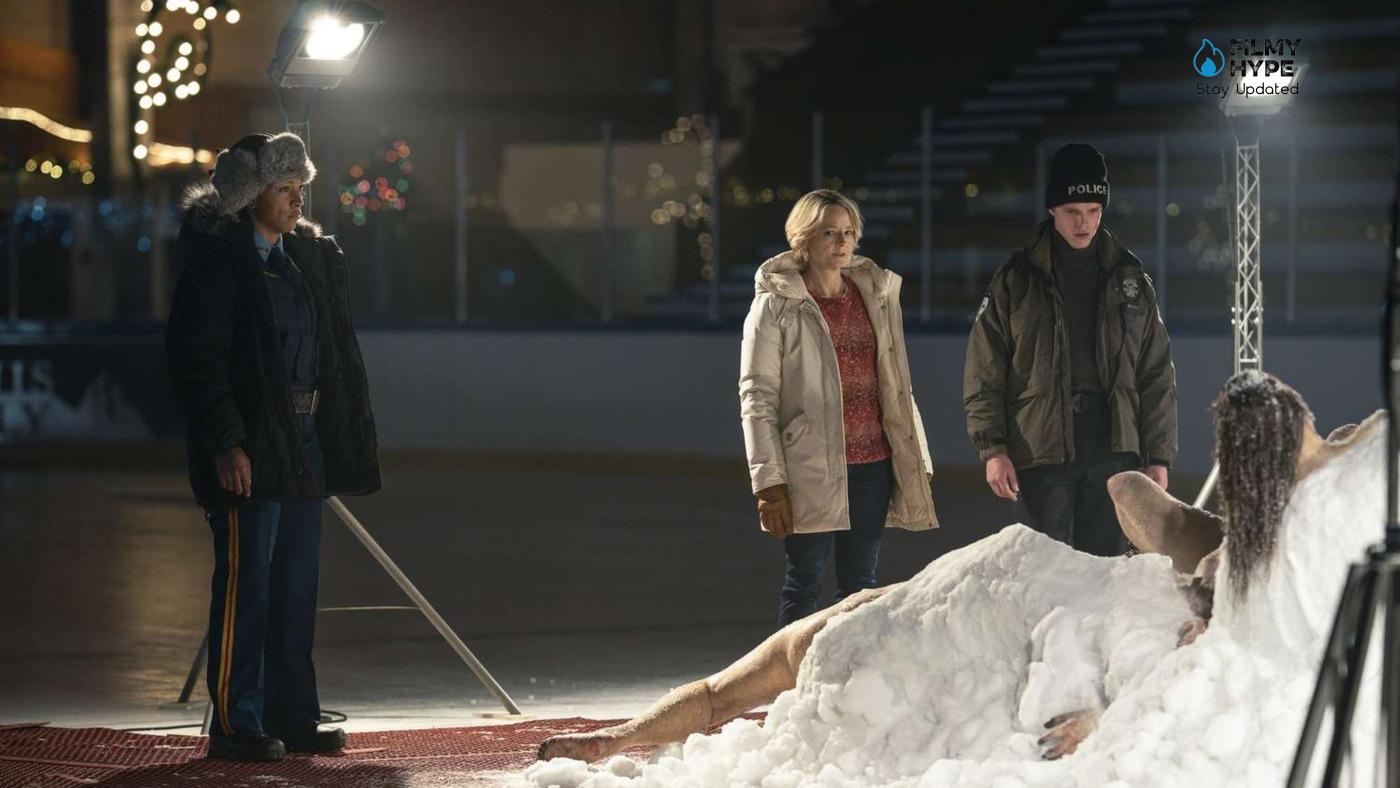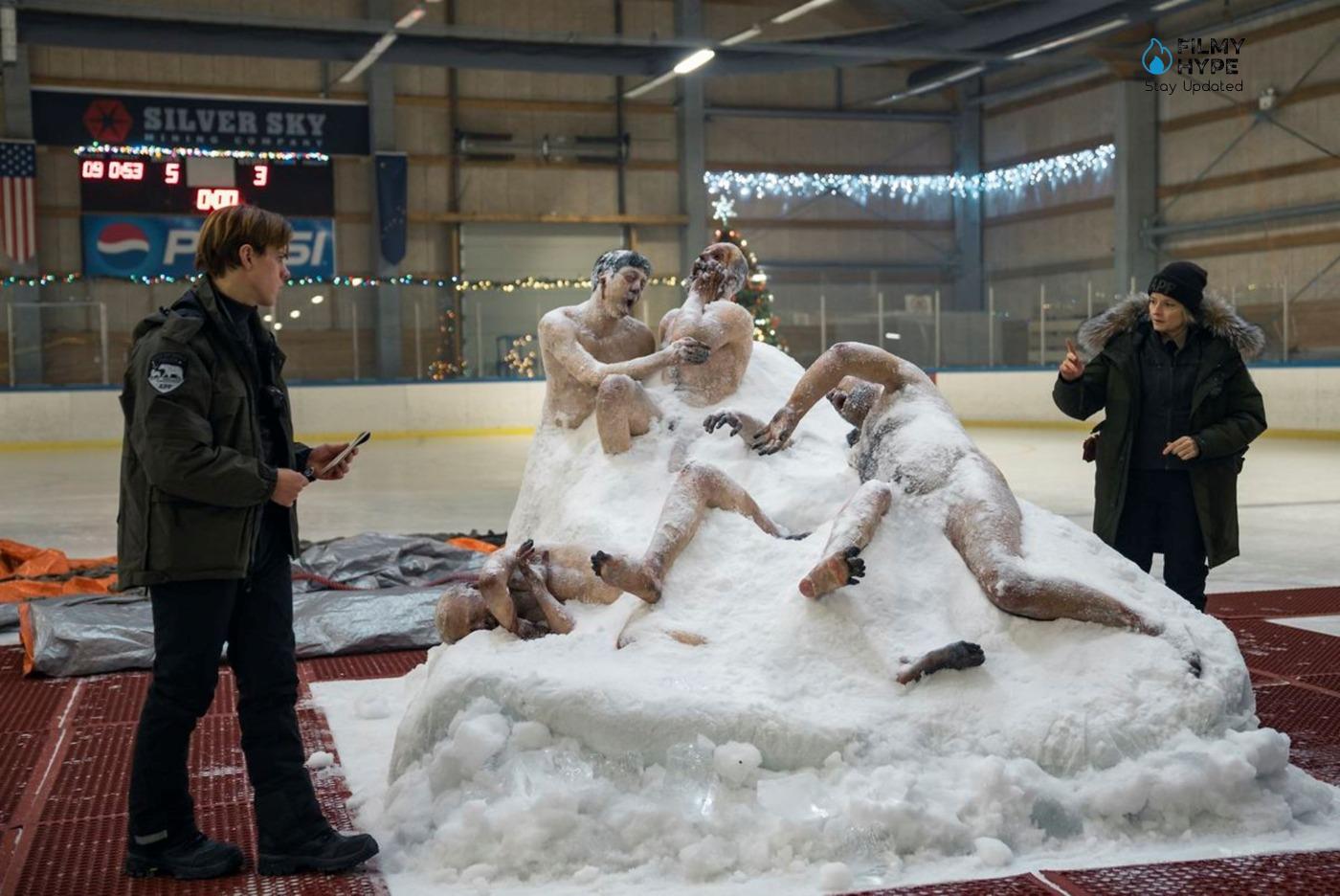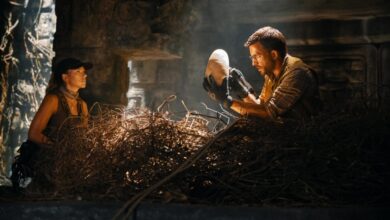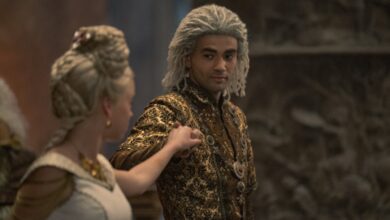True Detective – Night Country: Episode 2 Analysis and the True Story of the Episode
True Detective – Night Country is back on HBO with the new season. The anthology series, entitled Night Country in the fourth cycle of episodes, was created and entirely written by Nic Pizzolatto and won over critics and audiences especially with the first season, dating back ten years ago, with Matthew McConaughey and Woody Harrelson. On February 2, 1959, nine hikers camping in what has since been renamed “Djatlov Pass” (or Dyatlov) mysteriously lost their lives. The expedition, led by Igor Dyatlov (from whom it took its name), was located in the northern part of the Ural Mountains, and for over 60 years it remained at the center of a disturbing mystery. All kinds of explanations have been put forward to explain the deaths. The corpses were frozen, some barefoot.

Two of the victims had skull fractures, two others had broken ribs, and one was missing his tongue. Well yes. The tragic historical fact that has caused experts to discuss for decades – in the end, research was published that explained the massacre with an avalanche, to be precise a rare and particularly violent type of avalanche – is the source of inspiration for True Detective – Night Country, Confirmation comes from this second episode, in which we discover previously unpublished details about the bodies found at the end of the first episode. But there is much, much more. Let’s see the main points.
True Detective – Night Country: Episode 2 Analysis Travis Cohle: Rust Cohle’s Father is the Dead Man Who Showed the Way
From the beginning, ever since my spoiler-free review of the entire season, I’ve talked about Night Country’s ties to the first season. Well, in addition to the quality, of the symbols that we saw in the analysis of episode 1, now we also have a kinship bond. As we learn from the words that Rose (Fiona Shaw) addresses to Navarro (Kali Reis), Travis – her former lover, who committed suicide because he was terminally ill with leukemia – has returned to lead her to the discovery of the bodies of the missing scientists. Travis sometimes visits Rose. Because he has something to tell her. It happens in Ennis: in the fictional Alaskan town, especially during the dark season, many of the residents claim to have seen someone who died.
The courier who found the tongue at the Tsalal station tells it, Rose reiterates it, and Navarro knows it perfectly. But Travis is not a simple ghost returning from the dead. Travis is Travis Cohle, the father of Rust Cohle – the season 1 detective played by Matthew McConaughey. From True Detective Season 1, we know that Rust’s father was an Alaskan man named Travis, who died of leukemia. From Night Country we know that it is Travis and that – just like his son – he has a propensity to consider the boundary between the natural and the supernatural to be very blurry. So labile that it crosses it several times. The term Tuttle should also ring a bell in the minds of True Detective fans.

Peter Prior (Finn Bennett) tells Danvers (Jodie Foster) that he has been investigating the financiers of Tsalal Station leading to a front company called Tuttle. The cult of Tuttle was part of the plot of season 1, tying into the Yellow King, Hastur, who is revered by the cult of Tuttle. Maybe Annie K and Clark were part of it? The artifacts found in the trailer (with a straw doll reminiscent of True Detective Season 3) might suggest so. As well as the macabre finds inside and outside the trailer. This is something that Rose says is even older than ice: this? Or the symbol drawn in the snow and then immediately erased, which recurs in the episode reveals part of the mysteries, and refers to an even more ancient female element?
The spiral is painted on the roof of the trailer where Annie K, the victim of an unsolved murder, secretly met with her lover, scientist Raymond Clark (Owen McDonnell). The spiral was on Annie’s back and Clark had it tattooed over her heart 4 days after Annie’s death. The spiral is on the forehead of one of the victims, one of the scientists. But not all scientists are there. Clark is missing. Clark is still alive (and according to many, he was out of his mind. He wasn’t well). Clark is alive, we were saying… he’s not the only one.
The Horror, the Horror
Ice burns, screams, punctured eardrums, eyes gouged out, and finally the symbol on the forehead of one of the victims.
“We’re not playing games here; this is a crime scene! Pretend you know what you’re doing, you dirty *****!”.
The black of the eternal night, the white of the snow. The scream, the panic in Danvers’ eyes, all the cops jumping back. One of the bodies that make up that infernal picture of death and terror screams. One of them is still alive. How is it possible? They just took off his arm, broken like a breadstick because it was frozen. Yet he is alive. And it is after breaking his arm that they realize it: due to the screams of pain. These horrific details in the researchers’ murders drive us to the brink of madness. What could have so terrified all those grown men? Why does Navarro find their clothes folded in the snow? What were they running from? Questions – the right ones, as Danvers always repeats and as Cohle did – lead to increasingly frightening horrors.
From the corpses left to thaw in the ice rink of the richest woman in the city (Kate McKitterick, played by Dervla Kirwan, who also owns the mine), Danvers’ archenemy since the policewoman’s affair with her ex-husband, increasingly disturbing details emerge. And yes, of course: the language found at the Tsalal station is that of Annie K. After 6 years. The two cases are related. Danvers and Navarro weren’t just colleagues: they were friends. Danvers knew where Navarro kept the jars in the kitchen. They hung out regularly. They helped each other. Then something happened and it wasn’t the case of Annie K. Navarro talks about a certain Wheeler, but Danvers – we know this since we met her – doesn’t talk about personal things. He doesn’t want to know.
Layers of Ice and Stories
True Detective works on different narrative layers, with different time plans. A combination of events, experiences, and traumas determine Danvers and Navarro’s behavior and approach to the case. Danvers doesn’t talk about personal things, but Night Country shows us them. The flashback of an unrecognizable Danvers dancing with her husband, Leah’s (Isabella LaBlanc) father. Danvers are happy with a baby. Danvers who always smiled. Danvers, today, for 19 years has had sexual relations with the regional police chief, Ted Connelly (the great Christopher Eccleston), but who is careful not to establish an emotional bond. Danvers has sex but doesn’t confide. The horror of death emerges from the melting ice, and the traumas that made them who they are today emerge from the characters’ past.

Danvers continues to be harsh, saying a lot of bad words, not giving Leah the attention that the little girl would like. She insults Kayla’s grandmother (Anna Lambe), Peter’s wife because she paints a symbol of her people on her face. Danvers exploits everyone, including the geologist she teaches at school (she has a history with him too) and she asks for information on the search for the Tsalal station. She forces Peter to spend the night at the arena, watching the thawing corpses and causing him to argue with Kayla. Danvers takes, giving almost nothing in return. Danvers seems to have no respect for anyone. Her except for that stuffed polar bear, battered and missing one eye (like the bear she had met Navarro), and for little Darwin Prior, the child who brings out her tenderness in her. A feeling linked to Liz Danvers who no longer exists. She Was Buried: Layers.
Under the ice of Ennis, there is rot. The bad water, polluted by the mine – the same one Annie K was protesting against before she was killed. Beneath the ice is the origin of life, the ancient microorganism whose DNA could cure cancer, autoimmune diseases, everything. But extracting it is practically impossible. The geologist understood it, but Tsalal did not. Everything in True Detective – Night Country has an informative function. Every single scene. Julia who buys junk (the cost of living in Ennis) and doesn’t want to go to the hospital, Navarro’s flashback to his mentally ill mother who seems possessed, Danvers who trains Peter by having him make the deductions, the fate of his made, the first meeting between Rose and Navarro, the polluting mine and the protests that are about to return (Qavvik tells Navarro). Tsalal’s cleaning lady, the same one who hit Blair’s abusive ex-boyfriend with buckets. Danvers’ past influences her attitude towards adults, but not towards children. From every single scene, we gain information and connections that lead us to discoveries. The video shows Clark convulsing and then those words, which Danvers and Navarro already know:
She’s awake.
Hot and Cold, Light and Darkness: The Alternation and Symbolism in Colors
There are two aspects, from a visual point of view, that are predominant in this episode. As always, the use of color is fundamental in Night Country. This time, after blue, we have a predominance of green, and brown in various shades starting from beige, and orange. In particular in Rose’s house and clothes, in the professor’s clothes, and the school (chairs and team shirt included), not to mention the sheet covering the corpses. Colors that return in Captain Connelly’s clothing – but also in all the clothes of the extras – and naturally in the police station as well as in the motel. Green – keep this in mind for the alternation we will talk about shortly – is the mediator between heat and cold. Green emerges in nature when the ice melts, but it is also the symbolic color of secrets.
It represents a profound but occult knowledge of things and destiny. In this sense, here it represents the many narrative layers, the secrets of the characters, and the city. Green is the complementary color of red, which in symbolism represents the male sex. Green is therefore the color of the feminine, the origin of life, and in ancient Egypt, it was the color attributed to Isis: she who dominates fire and water and who represents the conscience that emerges from confusion. In short, green will lead us to the truth, to the solution of the mystery, to the melting of the layers of ice. Orange is the color that represents the breaking of the balance point of the spirit and libido. It is, therefore, the symbol of material love, of lust (surrounds Danvers and Connelly), of material love but also of spiritual love (the robes of Tibetan monks are orange). But achieving balance is so difficult that orange has traditionally become the color of lust, as we were saying, but also of infidelity. And of infidelity, in the meeting with Connelly – and not only – Danvers confesses several in this episode.
Brown is the color of the earth – essential when we start talking widely about the pollution brought by the mine. The color of autumn, of dead leaves, of sadness. Hank Prior (John Hawkes) wears it in almost the entire episode left by his wife, betrayed (with the “theft”) by his son, and cheated by his girlfriend (we understand this from the messages on the phone). Everything about Hank comes out in this episode, everything we need to know to follow him to the end of the season. Brown is found between red and black, representing degradation: an improper combination of pure colors. And then there is the rigorous alternation of light and shadow, heat and cold, internal and external. Each sequence involves an alternation, to continually remind us that it is night and cold outside. Even just with the opening of a window, or a look out of a car window. Ennis’ dualism is highlighted almost obsessively in this episode. To tell us, in case we forget, that there are two dimensions to this city. One inside, warm, safe. One outside, immersed in darkness, terrifying and dangerous. The perennial night during which “even the dead get bored”. Two worlds that coexist but are in contrast. Ennis, the city, and the night country, the country of the night.






